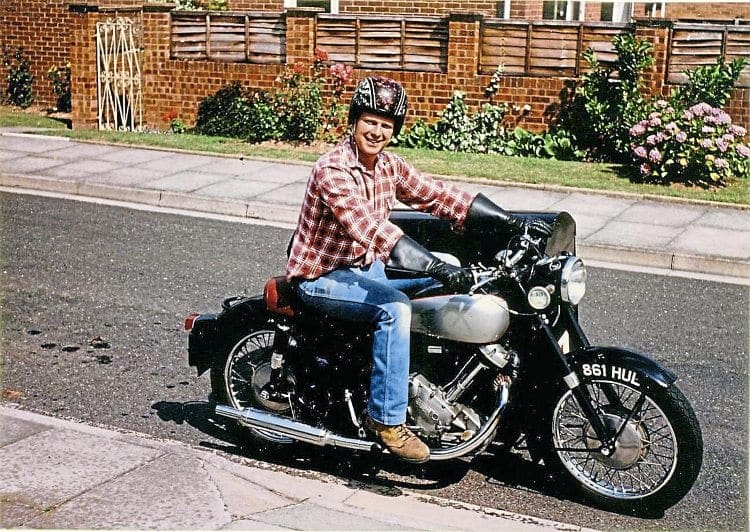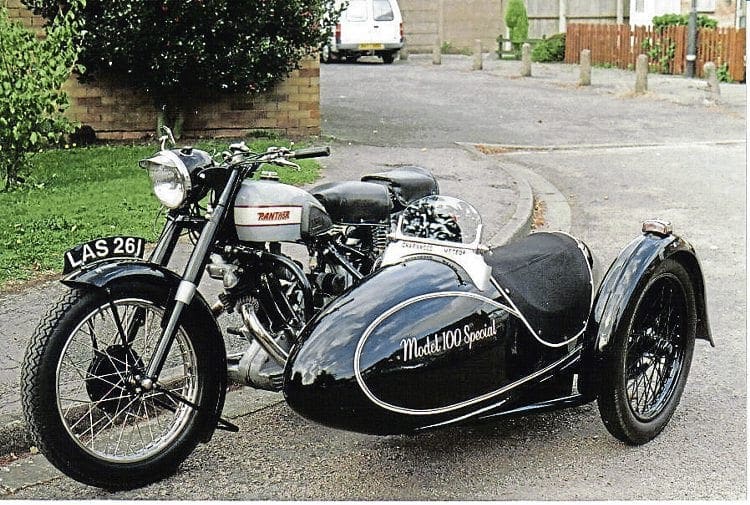Last month Mick Payne told about Bill Moore’s abiding love affair with Yorkshire-built Panther motorcycles and here he continues the story.
According to popular reason, “Panthers have got that enormous cylinder because they have such a long stroke.” True, but not true, if you know what I mean! Certainly they do have a stroke/bore ratio leaning to the long-stroke side, but they aren’t quite as extreme as many think.

Another of Bill Moore’s lovely outfits is a BSA M20 with a sign-written box and BSA’s side-valve sloggers have long strokes too.
A Panther 100 has a bore/stroke ratio of 87mm x 100mm, or 0.87:1, whereas a BSA M21 is 81 x 112, or 0.73:1. An even greater stroke/bore ratio can be found in Norton’s Big 4, and even that other doyen of the sidecar fraternity, the BSA A10, has a 70 bore x 84 stroke, giving pretty much the same figure as Panther’s long-stroke Model 120. Things aren’t always what they seem, and the Panther looks longer because of the stressed engine.
This takes me off on a tangent, for as an ex-engineer I have always wondered why motorcycle manufacturers stuck to the full-loop frame for so long. To my mind, much of that tubing is superfluous.

Think about it. What’s the most rigid – a piece of tube or a cast iron and alloy engine unit? The cradle frame is pretty much a throwback to the days when the pilot was expected to give a bit of light pedal assistance, and the engine had to have a home too.
Read more in the May issue of OBM – on sale now!





